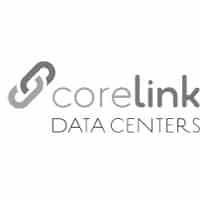 While data centers have fared relatively well during the COVID-19 pandemic, there is one category of the data center industry that has not only faired well, it has thrived – cloud provider data centers. Due to quarantine and stay-at-home orders, most businesses and schools had to turn to virtual operations which meant almost industries became dependent on the cloud. This shift to the using or increasing use in cloud providers led to a massive increase in cloud storage demand, and fast! Seemingly overnight, much of the world’s economy shifted to remote work. Cloud service providers immediately had to scale to meet the needs of the global economy in a matter of days or weeks, or in some cases, hours. To stay open and continue to educate our youth, schools were forced to immediately transform their digital operations, or possibly implement them for the first time. Now, as businesses begin to emerge from the initial panic mode of the lockdown, there will be a lot of fluctuation economically with many businesses not surviving these trying times. But, we will also see new businesses demand more cloud space and thrive in this new, more virtual world.
While data centers have fared relatively well during the COVID-19 pandemic, there is one category of the data center industry that has not only faired well, it has thrived – cloud provider data centers. Due to quarantine and stay-at-home orders, most businesses and schools had to turn to virtual operations which meant almost industries became dependent on the cloud. This shift to the using or increasing use in cloud providers led to a massive increase in cloud storage demand, and fast! Seemingly overnight, much of the world’s economy shifted to remote work. Cloud service providers immediately had to scale to meet the needs of the global economy in a matter of days or weeks, or in some cases, hours. To stay open and continue to educate our youth, schools were forced to immediately transform their digital operations, or possibly implement them for the first time. Now, as businesses begin to emerge from the initial panic mode of the lockdown, there will be a lot of fluctuation economically with many businesses not surviving these trying times. But, we will also see new businesses demand more cloud space and thrive in this new, more virtual world.
Scaling Data Center Infrastructure to Meet Increasing Cloud Demands
Try as we might to plan for various disasters, until we are living them, it can often be difficult to prepare for all of the variables that might arise. Cloud infrastructure preparedness, or lack thereof, has been apparent during the COVID-19 pandemic. These times have been unprecedented, with much of the world turning to cloud-based services during a lockdown. And, there is still much that is unknown about COVID-19 which has many leaders warning that we may see a resurgence again in the fall or again at some point; which could lead to further lockdowns and a large surge in demand once again. If data centers want to survive in a world where cloud demand can dramatically shift, they must have the infrastructure necessary to rapidly scale to meet needs.
Data Center Knowledge elaborates on what to anticipate in the data center market in terms of ramping up infrastructure to be prepared for hyperscaling cloud-based services, “Tier-two and tier-three cloud providers are also expected to accelerate infrastructure spend. Using hyperscale cloud services requires a level of technical skill many enterprises don’t have inhouse. The lower-tier providers that specialize in making cloud easier to use are expected to feel a business headwind from an influx of less skilled enterprise users…Investment in storage capacity by cloud providers is also expected to accelerate this and next year, driven by greater demand from video and gaming services and by enterprises increasingly relying on remote collaboration tools enabled by file sharing. Omdia has similar expectations for investment in multi-tenant server software, application delivery, and SD-WAN by cloud providers.”
Scaling Cooling to Meet Surge in Cloud Service Provider Data Centers
As a result of data centers scaling to meet infrastructure expansion in anticipation of increased cloud demand, data centers will need to expand their cooling capabilities for their new infrastructure. To accommodate additional infrastructure including high-density configurations of IT equipment and critical infrastructure, cooling systems will likely have to be enhanced or new cooling systems implemented.
 While data centers may have waited to adapt new cooling technologies in legacy data centers, they will likely be forced to re-evaluate their cooling processes and capabilities and potentially integrate new data center cooling technology. MarketWatch recently reported the latest data center cooling market projections for the next few years and they are favorable, largely because of the global effect on data centers due to the COVID-19 pandemic, “Increasing data storage needs, greater adoption of cloud computing, rapid growth of big data and data science within various industry verticals, and development of IT infrastructure within various developing countries are key factors driving the growth of global data center cooling market. Increasing humidity levels which restricts the use of outside air for data center cooling is also one of the prime factor boosting the growth of market…Based on architecture, the market is segmented as room and rack & row cooling. By cooling system the market is divided as Air conditioner, Precession Air conditioner, Chillers, Air Handling Units, and Others. Air conditioners holds the largest share of market owing to increased adoption within traditional data centers. By type of data centers the market is categorized into Large, Mid-size, and Small Data centers. Large data centers holds around 60 percent market share owing to increased need of bigger data centers. Telecom and IT are the major end users of data centers and contributes around 40 percent of market share. Increasing IT operation would provide sustainable growth to the segment.”
While data centers may have waited to adapt new cooling technologies in legacy data centers, they will likely be forced to re-evaluate their cooling processes and capabilities and potentially integrate new data center cooling technology. MarketWatch recently reported the latest data center cooling market projections for the next few years and they are favorable, largely because of the global effect on data centers due to the COVID-19 pandemic, “Increasing data storage needs, greater adoption of cloud computing, rapid growth of big data and data science within various industry verticals, and development of IT infrastructure within various developing countries are key factors driving the growth of global data center cooling market. Increasing humidity levels which restricts the use of outside air for data center cooling is also one of the prime factor boosting the growth of market…Based on architecture, the market is segmented as room and rack & row cooling. By cooling system the market is divided as Air conditioner, Precession Air conditioner, Chillers, Air Handling Units, and Others. Air conditioners holds the largest share of market owing to increased adoption within traditional data centers. By type of data centers the market is categorized into Large, Mid-size, and Small Data centers. Large data centers holds around 60 percent market share owing to increased need of bigger data centers. Telecom and IT are the major end users of data centers and contributes around 40 percent of market share. Increasing IT operation would provide sustainable growth to the segment.”
What Data Centers Have Learned & How Data Centers Can Strategically Prepare for the Future
Gone are the days when cloud data center managers could try to hold off on modernizing their infrastructure. Cloud data center providers need to poise themselves strategically to be able to meet demands and scale rapidly should it be necessary to quarantine again. Now is an optimal time to put your data center and evaluate whether adequate capacity and overall infrastructure are present or if changes are needed. When there is a huge spike in VPN and traffic, will your data center be able to accommodate that or will your users think you are struggling to manage bandwidth and opt to look at other cloud service data centers? Will you upgrade your equipment and infrastructure to support increased rack density but wait to upgrade cooling systems, potentially resulting in costly downtime? Now that we have seen the unprecedented, we can use what we have learned in the last few months to be more specific with our evaluations and strategies moving forward. Whether we never quarantine again or not, we have likely made a shift to increasing remote work, more flexible online schooling options, and spending more time in community online, whether chatting or playing games together. In a socially distant world, hyperscaling is the new norm, and cloud service data centers must be optimally prepared for rapid scaling of cloud infrastructure and storage.




























